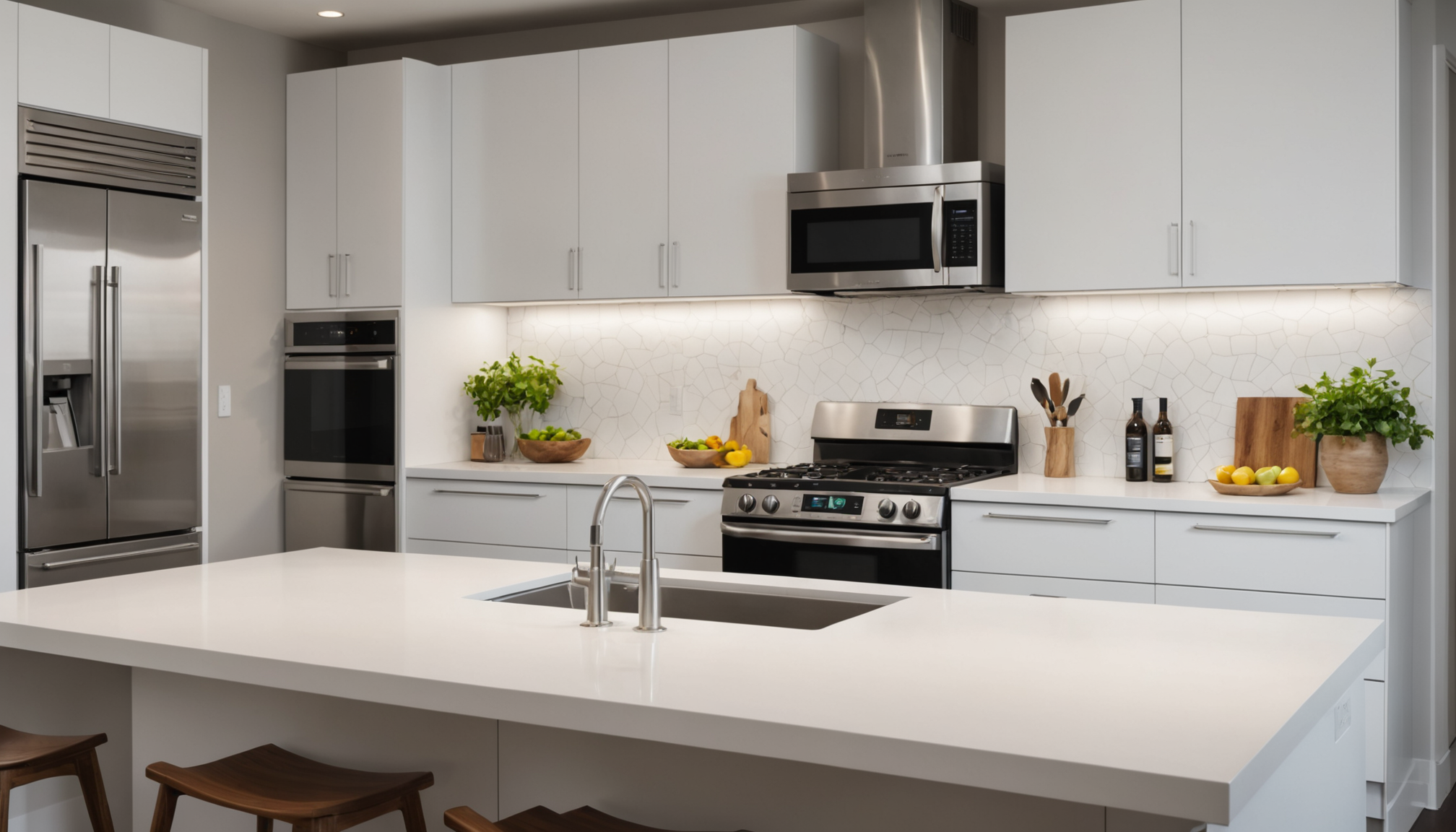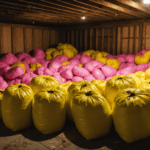Before making significant changes in your kitchen to enhance safety, the first critical step is identifying potential hazards that could jeopardize the well-being of you and your family. While it may seem straightforward, many common dangers in a kitchen can often go unnoticed. By taking the time to thoroughly assess potential risks, you can ensure your culinary space remains a secure and inviting area for everyone.
Start by examining the layout of your kitchen. The modern kitchen often emphasizes open spaces and sleek designs, but these can sometimes introduce unforeseen risks. For instance, open flames, sharp corners, and slippery floors are all elements that deserve close scrutiny. Walking through your kitchen with a fresh perspective, as if you were hiring pros to evaluate the space, can help in spotting these hazards. Take note of any areas where tripping might occur, such as rugs or uneven floors, and consider solutions to mitigate these issues.
Next, evaluate the location and condition of your appliances. Appliances, both large and small, should be strategically positioned to avoid creating obstacles or blocking pathways. Ensure they are functioning properly and are serviced regularly. Particular attention should be paid to plumbing-related appliances like dishwashers and sinks, which can cause flooding or leaks if not correctly maintained. Dripping faucets and clogged drains not only contribute to water damage but can also increase the risk of slips and falls, making timely upkeep essential.
Consider also the electrical setup in your kitchen. Modern kitchens are packed with electrical gadgets, from coffee makers to microwaves, all of which pose a risk if not managed correctly. Check for frayed cords, overloading of sockets, and ensure that all outlets near water sources are equipped with ground-fault circuit interrupters (GFCIs) to prevent electrical shocks.
Identifying potential hazards might seem daunting, but using a systematic approach can simplify the task. Consider creating a checklist to methodically assess each area of your kitchen. Some points to include on this checklist are:
- Examine all surfaces for stability and slip-resistance.
- Secure loose wires and cables, especially in high foot traffic areas.
- Inspect water fixtures for leaks and ensure they have easy-to-use controls.
- Check that all appliances are in safe, working order and are regularly maintained.
- Verify that smoke detectors and fire extinguishers are present and functional.
Additionally, a simple comparison of common kitchen hazards versus preventive measures can highlight where immediate attention is needed:
| Hazard | Preventive Measure |
| Slippery Floors | Use non-slip mats and clean up spills immediately. |
| Fire Risk from Stovetop | Have a kitchen-rated fire extinguisher accessible and never leave cooking unattended. |
| Electrical Overload | Limit the use of extension cords and avoid plugging too many appliances into one socket. |
| Sharp Instruments | Store all sharp tools out of reach of children and use proper storage solutions. |
By systematically identifying and addressing these potential hazards, your kitchen transitions from a space fraught with hidden dangers to a secure and enjoyable environment for all your culinary pursuits.
Choosing child-safe appliances
 When it comes to preparing your kitchen for optimal safety, selecting child-safe appliances is a key step that requires thoughtful consideration. This effort not only enhances the safety of young ones but also contributes to a smoother, more enjoyable cooking experience for the entire family. To make an informed decision about child-safe appliances in your modern kitchen, follow these detailed steps:
When it comes to preparing your kitchen for optimal safety, selecting child-safe appliances is a key step that requires thoughtful consideration. This effort not only enhances the safety of young ones but also contributes to a smoother, more enjoyable cooking experience for the entire family. To make an informed decision about child-safe appliances in your modern kitchen, follow these detailed steps:
1. Research and Review:
– Begin by researching the various child-safe appliances available on the market. Pay close attention to reviews and ratings from other parents who have firsthand experience with these products. This can provide valuable insights into the functionality and safety features of appliances that have been tested in real-life situations.
– Look for appliances with child lock features such as those on ovens and microwaves, which help prevent accidental operation. These locks typically disable the control panel, making it nearly impossible for little hands to alter settings or switch on the appliance unauthorized.
2. Safety Certifications:
– Ensure that any appliance you consider has the necessary safety certifications. In the United States, look for certifications from recognized organizations such as Underwriters Laboratories (UL) or NSF International. These certifications indicate that the product has been tested for safety and meets high standards.
– For additional assurance, consult consumer safety resources which often list recommended appliances known for their reliability and safety features.
3. Ergonomic Considerations:
– Catering to both safety and convenience, choose appliances designed with ergonomic principles in mind. This can include features such as cool-touch surfaces and easy-to-read displays. Ergonomic designs minimize risks of injuries not just for children but also for all family members using the kitchen.
– For instance, refrigerators with adjustable shelves can prevent heavy items from becoming accessible, reducing the risk of falls and ensuring a more secure kitchen environment.
4. Installation and Placement:
– Proper installation plays a crucial role in ensuring the safety of any appliance. Consider hiring pros to ensure that appliances are installed according to manufacturers’ specifications. Incorrect installation could lead to hazards such as electrical shocks or malfunction.
– Additionally, strategize the placement of appliances. Choose locations that restrict children’s access, such as wall-mounted ovens above counter height, yet still maintain operational efficiency and comfort for adults using the kitchen.
5. Maintaining Regular Inspections:
– Once you’ve chosen and installed the appropriate appliances, develop a routine to regularly inspect them. Perform checks to make sure all child-lock features and safety mechanisms are functioning optimally. Address any malfunction immediately to maintain a secure kitchen environment.
– Remember to keep appliance manuals on hand as they contain valuable maintenance tips and troubleshooting advice specific to your model.
By following these steps, you ensure a safer and more secure kitchen atmosphere, effectively minimizing risks for children while maintaining functionality and aesthetics. Consider modern appliances designed specifically with child safety in mind, and stay updated on the latest advancements to continually enhance the security of your culinary space.
Storing sharp objects securely
 In any kitchen, sharp objects such as knives, scissors, and peelers are essential tools for meal preparation. However, their presence also comes with inherent risks, particularly if they are not stored securely. Ensuring that these potentially dangerous items are kept out of reach from curious children and safely stowed away from accidental contact is a primary concern for maintaining a secure kitchen environment.
In any kitchen, sharp objects such as knives, scissors, and peelers are essential tools for meal preparation. However, their presence also comes with inherent risks, particularly if they are not stored securely. Ensuring that these potentially dangerous items are kept out of reach from curious children and safely stowed away from accidental contact is a primary concern for maintaining a secure kitchen environment.
Start by evaluating the current storage solutions you have in place for sharp objects. Traditional methods like placing knives in a drawer without a designated compartment can lead to various safety issues. Instead, consider investing in cut-resistant knife blocks or magnetic strips, which can keep your knives organized and readily accessible for adults, while ensuring they are placed high enough or secured away from children. These solutions eliminate the risk of blindly reaching into a drawer and potentially causing injury, offering both safety and efficiency in a modern kitchen.
For families with smaller children, a lockable drawer or cabinet designed specifically for storing sharp tools can provide an extra layer of safety. These child-proofing methods prevent unauthorized access and allow for peace of mind. For a more sophisticated approach, hiring pros to install specially designed storage systems can seamlessly integrate safety with modern kitchen aesthetics. Professionals can suggest tailored solutions that fit your kitchen’s layout, ensuring that safety does not compromise the overall design.
If you frequently use a variety of sharp tools, consider a mobile kitchen cart with a lockable knife compartment. This not only offers flexibility in tool placement but allows you to keep your most-used items secured when not in immediate use. Opt for models with soft-close mechanisms to prevent forgotten open drawers or cabinets, which can act as unintended hazards for small ones.
Routine maintenance and inspection of your storage areas should be a regular practice. Check that locking mechanisms are functioning correctly and that knife blocks or strips remain secure. Moreover, inspect your sharp tools regularly to maintain their condition and prevent dull edges, which can lead to slips or accidents during use.
Remember, the key to effectively storing sharp objects lies in the careful combination of accessibility for responsible users and security against accidents. By evaluating your current storage solutions and considering enhancements like child-proofing or professional installations, you create a safer kitchen environment that encourages stress-free cooking for everyone.
Managing fire safety measures
 Ensuring your kitchen is safeguarded against fire hazards is a critical component of maintaining an overall secure environment. Whether you’re an experienced cook or a novice who occasionally prepares meals, understanding and implementing effective fire safety measures can prevent potential disasters.
Ensuring your kitchen is safeguarded against fire hazards is a critical component of maintaining an overall secure environment. Whether you’re an experienced cook or a novice who occasionally prepares meals, understanding and implementing effective fire safety measures can prevent potential disasters.
Firstly, it’s essential to keep a fire extinguisher easily accessible in your kitchen. Choose one that is rated for kitchen use, typically labeled as “K” class, specifically designed to extinguish fires involving cooking oils or fats. Place it in a spot that’s both visible and reachable, but away from the stove to avoid exposure to heat. Make sure to familiarize yourself and your family with instructions on its proper use. Routine checks are recommended to ensure the extinguisher is fully charged and operational, and it might be beneficial to consider hiring pros for regular maintenance services.
Equally important is the installation and maintenance of smoke detectors. They should be placed outside of the kitchen to avoid false alarms from everyday cooking activities but close enough to detect smoke quickly. Opt for interconnected smoke alarms, which offer a modern and more secure approach, as they alert throughout the home when any single unit is triggered. Regularly test these alarms, replace batteries at least twice a year, and schedule comprehensive inspections by professionals if needed.
Cooking consciously is another vital measure. Never leave food unattended on the stove, as this remains one of the leading causes of kitchen fires. If you need to leave the kitchen while cooking, take a moment to turn off the burner entirely, or use a timer as a reminder to check back soon. It’s also wise to keep flammable items like dish towels, paper towels, and wooden utensils away from the cooking area to prevent accidental ignition.
In addition to these practices, having a fire escape plan is crucial. Ensure that all family members know the safest paths to exit the home in case of a fire and conduct regular drills to reinforce the procedure. Designate a meeting point to ensure everyone is accounted for outside the home, providing peace of mind that can reduce panic during an actual emergency.
Lastly, consider investing in appliances with built-in fire safety features, such as cooktops with auto shut-off functions that turn off the heat if left unattended for a specific duration. These modern advancements can be further enhanced by hiring pros to verify that all installations comply with local safety regulations and standards.
By conscientiously managing fire safety measures, you nurture a kitchen that remains a haven for culinary creativity while reinforcing the security and well-being of everyone who enters. Keeping up with each of these strategies contributes significantly to a safer, more harmonious home environment.
Organizing harmful substances
 Harmful substances such as cleaning agents, pesticides, and other chemical products are common in most kitchens, yet they pose potential dangers if not properly managed. A significant step in securing your kitchen is to organize these substances efficiently, minimizing the risk of accidental ingestion or exposure, especially by children.
Harmful substances such as cleaning agents, pesticides, and other chemical products are common in most kitchens, yet they pose potential dangers if not properly managed. A significant step in securing your kitchen is to organize these substances efficiently, minimizing the risk of accidental ingestion or exposure, especially by children.
Start by conducting a comprehensive audit of all substances stored in your kitchen. Catalog these items and check expiration dates, disposing of any products that are past their prime. This not only enhances safety but can also improve the efficacy of your cleaning routine with fresh supplies.
Consider utilizing lockable cabinets or high shelves out of the reach of children for storing potentially harmful substances. For households with particularly modern kitchen designs where space might be limited, invest in child-safe cabinet locks that can be easily installed by hiring pros. These locks offer peace of mind by ensuring that inquisitive young hands can’t access dangerous materials.
When organizing these products, always keep them in their original containers to avoid confusion or mixing of chemicals. Clearly label containers with content details and hazard warnings, even if they seem obvious to adults. This practice is especially crucial if you transfer substances into smaller or more convenient containers.
Group similar types of substances together, such as placing all cleaning agents in one section and gardening or plumbing products in another. Use transparent bins for sorting, as this allows for easy visual checks of your inventory without rummaging, reducing the chance of spills or exposure.
Moreover, be mindful of proper ventilation in the storage area. Ensure there is adequate airflow to prevent the buildup of fumes that could rise to harmful levels. This might involve a modest redesign of your storage layout and could benefit from professional input to maximize both safety and utility.
Regular inspections and inventory audits of your harmful substances can prevent accidents. Incorporate this task into your routine maintenance checklists, ensuring that safety measures are consistently upheld and that any expired, damaged, or otherwise questionable items are promptly addressed.
In a modern kitchen where functionality and safety go hand in hand, organizing harmful substances effectively contributes significantly to creating a secure home environment. Thoughtfully storing these products not only protects your loved ones but also aligns with best practices for a well-maintained and safe kitchen space.
In conclusion, securing your kitchen involves a holistic approach to managing everyday hazards. From identifying potential risks to employing thoughtful storage solutions, every step plays a crucial role in promoting safety. By prioritizing child-safe appliances, storing sharp objects securely, maintaining meticulous fire safety measures, and organizing harmful substances suitably, you cultivate a kitchen that offers peace of mind and enhances the joy of cooking. Embrace these safety practices, and consider enlisting expert help when necessary, to ensure a well-protected, modern kitchen environment for all.

